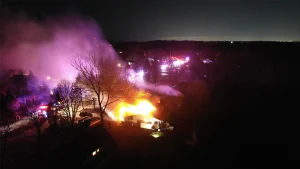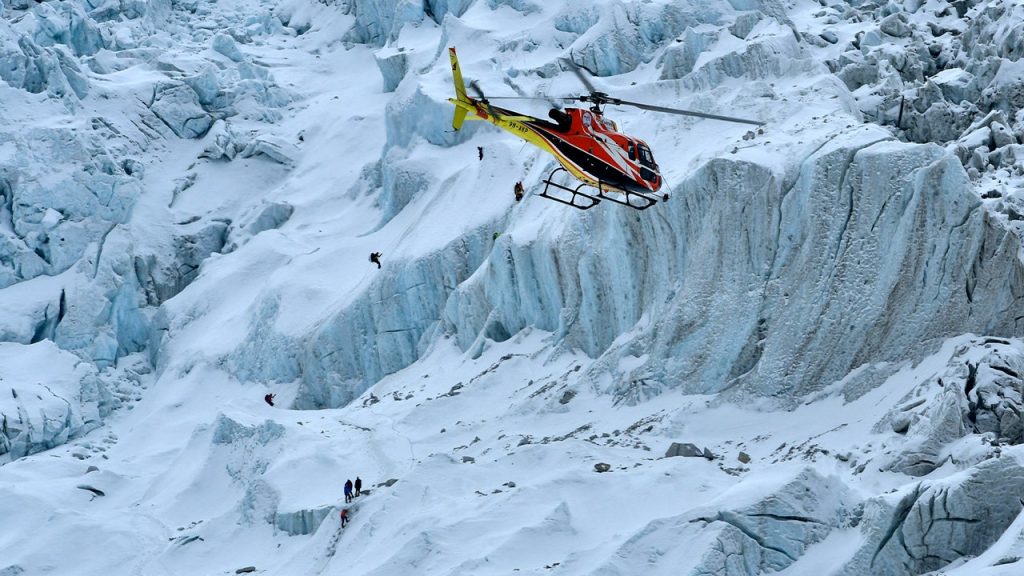Sudden Blizzard Traps Nearly 1,000 Hikers on Mount Everest’s Tibetan Slopes
A sudden and severe blizzard has stranded nearly 1,000 people on Mount Everest’s Tibetan slopes during China’s National Day holiday weekend, creating a large-scale emergency in one of the world’s most remote environments. According to reports from state media outlets, the storm struck unexpectedly on Friday, unleashing heavy snow and rain across the Himalayan region at a time when hiking trails were crowded with holiday visitors. Rescue operations have successfully brought approximately 350 people to safety as of Sunday, while hundreds more remain trapped in high-altitude camps, though authorities have established contact with many of them. The most severe conditions developed near Everest’s eastern Kangshung face in Tibet’s Karma Valley, an extremely remote area with elevations averaging over 13,779 feet, where ordinary challenges of mountain trekking suddenly became life-threatening emergency situations.
“The weather this year is not normal. The guide said he had never encountered such weather in October. And it happened all too suddenly,” explained Chen Geshuang, one of the fortunate trekkers who made it to safety in Qudang township with his 18-person hiking group. His firsthand account highlights the unexpected nature of the storm, which caught even experienced local guides by surprise. The blizzard’s timing proved particularly problematic as it coincided with China’s eight-day National Day holiday period, when tourist numbers in the region typically surge. By Saturday, the continuous snowfall had effectively blocked numerous roads and trails, cutting off access to several popular trekking routes and leaving hikers, guides, and local support staff stranded in dangerous conditions. The sudden drop in temperature combined with wet conditions created serious hypothermia risks, with rescue teams reporting collapsed tents and weather-related medical emergencies among those trapped.
The rescue efforts have mobilized significant local resources, including hundreds of villagers and members of Tibet’s Blue Sky Rescue Team, who responded to distress calls from multiple locations throughout the affected area. CCTV reported that several hundred trekkers have been guided to safety in Qudang township, with hundreds more expected to arrive in stages as emergency workers and locals clear snow-blocked mountain passes. The Tibetan regional government has coordinated comprehensive search and rescue operations, deploying heavy machinery to reopen critical roads leading to the affected campsites. These collaborative efforts between professional rescue teams and local communities highlight the extraordinary measures required to address the emergency in such challenging terrain. Authorities have also taken preventive measures to avoid further complications, suspending ticket sales and closing entry to the Everest Scenic Area on Saturday evening, according to official announcements from the Tingri County Tourism Company.
The scope of the emergency becomes clearer when considering the estimated numbers involved. State-backed Jimu news has reported that nearly 1,000 people, including hikers, guides, and local support staff, became trapped when the blizzard struck. This large number reflects both the popularity of the area during the national holiday period and the comprehensive nature of trekking operations in the region, which typically involve extensive support networks of local guides and staff. What remains unclear is whether trekkers on Everest’s north face, also located in Tibet but generally more accessible by road, have been affected by the same weather system. The situation highlights the inherent risks of adventure tourism in remote Himalayan regions, where weather conditions can change dramatically with little warning, and evacuation options are severely limited by geography and infrastructure constraints.
The extreme weather system responsible for the Everest crisis has not been confined to the Tibetan side of the Himalayas. In neighboring Nepal, the same weather pattern has triggered devastating landslides and flash floods since Friday, resulting in at least 47 confirmed deaths. The eastern Ilam district near the Indian border has been particularly hard hit, with 35 people killed in separate landslide incidents. Additional victims remain missing after being swept away by floodwaters, according to Reuters reports. This regional dimension of the weather emergency underscores how mountain communities across the Himalayan range face similar vulnerabilities to extreme weather events, despite being separated by national borders. Climate experts have increasingly pointed to changing weather patterns in the Himalayas, with some traditional seasonal norms becoming less reliable for planning purposes in recent years.
As rescue operations continue on Mount Everest’s Tibetan slopes, the incident serves as a stark reminder of nature’s unpredictability and the special precautions required for high-altitude adventure travel. The rapid mobilization of local resources and the coordination between government agencies, professional rescue teams, and local communities will likely be crucial factors in determining the final outcome of this emergency. For the hundreds still waiting to be brought to safety, each passing hour presents continued challenges of cold, hunger, and anxiety. Meanwhile, for those already rescued, like trekker Chen Geshuang, the experience has provided a sobering lesson in mountain respect and preparedness. As climate patterns continue to shift globally, this incident may also signal the need for more conservative planning and enhanced emergency response capabilities in popular trekking regions that have historically operated within more predictable seasonal patterns.














